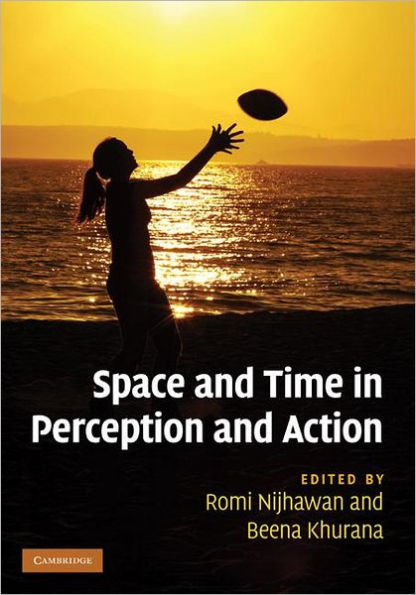Table of Contents
List of contributors viii
Acknowledgments xiii
1 Space and time: the fabric of thought and reality Beena Khurana Romi Nijhawan 1
Part I Time-space during action: perisaccadic mislocalization and reaching
2 The internal eye position signal, psychophysics, and neurobiology John Schlag Madeleine Schlag-Rey 9
3 Factors influencing perisaccadic visual mislocalization Hitoshi Honda 19
4 Visual and nonvisual factors in perisaccadic compression of space Markus Lappe Lars Michels Holger Awater 38
5 Keeping vision stable: rapid updating of spatiotopic receptive fields may cause relativistic-like effects M. Concetta Morrone John Ross David C. Burr 52
6 Combined influences of extraretinal signals, retinal signals, and visual induction on space perception and manual behavior in perisaccadic and steady viewing Leonard Matin Wenxun Li 63
7 Space constancy: the rise and fall of perceptual compensation Bruce Bridgeman 94
8 Intercepting moving objects: do eye movements matter? Eli Brenner Jeroen B. J. Smeets 109
9 The utility of visual motion for goal-directed reaching David Whitney Ikuya Murakami Hiroaki Gomi 121
Part II Temporal phenomena: perception
10 Saccadic chronostasis and the continuity of subjective temporal experience across eye movements Kielan Yarrow Patrick Haggard John C. Rothwell 149
11 Experiencing the future: the influence of self-initiation on temporal perception Timothy Verstynen Michael Oliver Richard B. Ivry 164
12 On the perceived interdependence of space and time: evidence for spatial priming in the temporal kappa effect Gisa Aschersleben Jochen Müsseler 181
Part III Temporal phenomena: binding and asynchrony
13 Dynamics of visual feature binding Colin W. G. Clifford 199
14 How does the timing of neural signals map onto the timing of perception? David M. Eagleman 216
15 Mechanisms of simultaneity constancy Laurence Harris Vanessa Harrar Philip Jaekl Agnieszka Kopinska 232
16 Relative timing and perceptual asynchrony Derek H. Arnold 254
17 The time marker account of cross-channel temporal judgments Shin'ya Nishida Alan Johnston 278
18 Simultaneity versus asynchrony of visual motion and luminance changes Martin J. M. Lankheet Wim A. van de Grind 301
Part IV Spatial phenomena: forward shift effects
19 The Fröhlich effect: past and present Dirk Kerzel 321
20 Approaches to representational momentum: theories and models Timothy L. Hubbard 338
21 Conceptual influence on the flash-lag effect and representational momentum Masayoshi Nagai Mutsumi Suganuma Romi Nijhawan Jennifer J. Freyd Geoffrey Miller Katsumi Watanabe 366
22 Perceptual asynchronies and the dual-channel differential latency hypothesis Hulusi Kafaligönül Saumil S. Patel Haluk Ögmen Harold E. Bedell Gopathy Purushothaman 379
23 Paying attention to the flash-lag effect Marcus V. C. Baldo Stanley A. Klein 396
24 Illusions of time, space, and motion: flash-lag meets chopsticks and reversed phi Stuart Anstis 408
25 Bridging the gap: a model of common neural mechanisms underlying the Fröhlich effect, the flash-lag effect, and the representational momentum effect Dirk Jancke Wolfram Erlhagen 422
26 Perceiving-the-present and a unifying theory of illusions Mark A. Changizi Andrew Hsieh Romi Nijhawan Ryota Kanai Shinsuke Shimojo 441
27 History and theory of flash-lag: past, present, and future Gerrit W. Maus Beena Khurana Romi Nijhawan 477
Part V Space-time and awareness
28 Object updating: a force for perceptual continuity and scene stability in human vision James T. Enns Alejandro Lleras Cathleen M. Moore 503
29 A motion illusion reveals the temporally discrete nature of visual awareness Rufin VanRullen Leila Reddy Christof Koch 521
30 Priming and retouch in flash-lag and other phenomena of the streaming perceptual input Talis Bachmann 536
Index 559




